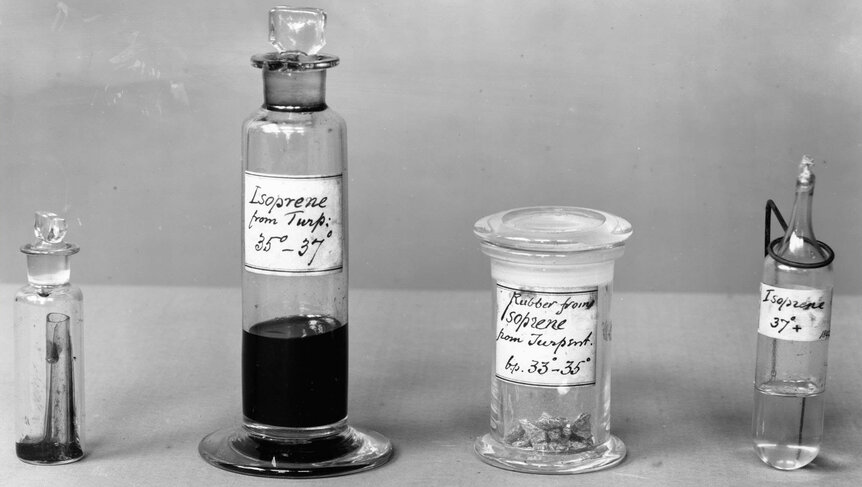Create a free profile to get unlimited access to exclusive videos, sweepstakes, and more!
Forget oxygen - scientists think stranger substances could be signs of life

When we search for life beyond Earth, we also have to look beyond its parameters for life as we know it. That could mean imagining life as we don’t know it.
There are things that are alien to us right here on Earth. Microbes that eat rocks and methane actually exist, and some bacteria at the most ancient depths of the ocean are so far removed from the surface that they are unable to recognize mammalian immune cells (and vice versa). Extremophiles like tardigrades and some nematodes can survive just about anything from impenetrable darkness to a deep freeze. Things could get even weirder outside of our planet.
This is why MIT scientists are looking at some unexpected potential biosignatures — like isoprene, whose production on Earth rvials that of methane on Earthe.
“Many research studies have found isoprene to be produced by a wide variety of life on Earth," researcher Zhuchang Zhan, who led a study recently published in Astrobiology, told SYFY WIRE. "Furthermore, 60% of compounds made by life include polymers of isoprene, or isoprenoids, sometimes heavily modified. We can say the production of isoprenoids is a fundamental pillar of our Earth's biochemistry.”
If we were to only seek out rocky planets in what we, as Earth-born carbon-based life-forms, have determined to be the habitable zone of a star system, we would probably end up vastly disappointed. Earth may be a rarity for all we know. That still doesn't mean that planets which may be crawling with life do not share characteristics with the one we live on. Next to the usual suspects such as oxygen, carbon dioxide and methane, along with chemicals produced by volcanism (which is seen as a potential sign of habitability elsewhere), isoprene has now made the list of potential biosignatures because Earth life produces so much of it.
Isoprene is mostly emitted into the atmosphere by deciduous trees and can strengthen the ozone layer. Its origins are unlikely to be abiotic because it is a by-product of processes in organisms from fungi to animals, which evolved so far from each other that Zhan suspects it might be necessary for life to spawn anywhere in the universe.
"To identify isoprene, we need observations of mid-infrared spectral features where methane and other hydrocarbons do not overlap," Zhan said. "Finally, isoprene will always be confused with a few other very similar hydrocarbons, but they are equally complex compounds and likely also made by life."
Isoprene on Earth is destroyed by free radicals which contain oxygen. In anoxic atmosphere, which is devoid of oxygen, isoprene is destroyed by chemical interactions with light. Whether isoprene on another planet may also degrade because of emissions from living organisms or other interactions that are yet unknown, but anoxic environments give this substance a better chance of staying intact long enough for a spacecraft to detect it. This is why Zhang’s team created virtual scenarios of a spectrometer detecting isoprene in the atmosphere of a rocky exoplanet with an anoxic atmosphere and what are thought to be habitable temperatures.
The researchers also made sure to account for the temperamental behavior of a host star, since the Sun gives us enough grief when solar storms and coronal mass ejections mess with our satellites and electric infrastructure. While that may not happen on some exoplanet where the most intelligent forms of life you can find are microbes, astral particles can screw up observations that will be transmitted to scientists who will think they are seeing something the atmosphere of a planet when it actually came from the star it orbits.
While even Hubble and Tess could get confused as to what is coming from a planet and what is coming from a star — and that is in the rare even that they can characterize an exoplanet’s atmosphere — the James Webb Space Telescope will have a much better ability to identify elements and molecules by their spectra. For all we know, there could even be microbes floating around in the vapors of a planet’s atmosphere. But how do we find them, especially when interfering starlight can be so problematic to observations?
"The biggest breakthroughs needed are related to blocking out the starlight to see the planet directly, a concept called high-contrast direct imaging," Sara Seager, who co-authored the study, also told SYFY WRIE. "Here we have to go to space above the blurring effects of Earth's atmosphere to find, identify, and search for biosignature gases on Earth twins (at least those orbiting sun-like stars)."
Habitability is still mostly theoretical and also biased, since we base predictions on what we know about our planet. Humans would be the aliens to whatever extraterrestrial species may be out there. We may breathe what would be poison to them, eat things they could never stomach and appear like something their eyes had never seen, if they even have eyes. Wherever they are, they might not even need them.
"We are actively working on finding more potential biosignatures," Zhan said. "Some gases that we've been working on include phosphine, ammonia, methyl chloride, and more to come."
It really depends whose sensory organs (in the absence of eyes) you are looking at it through.















